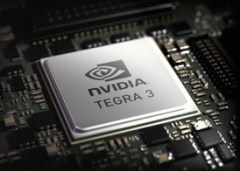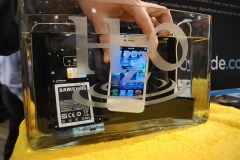Over the past few years, smartphones have made some incredible leaps and bounds in terms of hardware — to the point that it’s hard to imagine how the technology will continue to impress.
Still, there are a handful of new technologies on the horizon worth looking forward to. Here are six smartphone advancements to look out for in the coming year or so:
1080p Displays
Just when you thought mobile displays couldn’t get more pixel-rich, LG Display has announced a 5-inch screen with 1080p resolution (that’s 1920-by-1080 pixels), pictured above. The company will start offering these screens to device makers in the second half of the year, paving the way for more phone-tablet hybrids with insane pixel density. On a related note, 720p resolution may trickle down to smaller phones this year, although customers seem perfectly happy with gigantic handsets.
(MORE: Why Buying a Cheap Smartphone Isn’t So Dumb Anymore)
Quad-Core in the U.S.

Nvidia
Nvidia’s Tegra 3 quad-core processor debuted late last year, but it’s been absent from smartphones in the United States because it didn’t support 4G LTE networks. Expect that to change now that Nvidia is integrating a new Icera chipset, which AT&T has validated for its 4G LTE network. Qualcomm, meanwhile, told CNET that it will have a quad-core chip out in the second half of this year with a separate chip to support LTE. With any luck, the result will be a boom in applications that take advantage of the extra processing power, particularly in Android phones, where the high-end specs typically end up first.
Phone-to-TV Streaming
As phones become more like central hubs for photos, videos and music, we need a way to beam that content to other devices. Apple’s AirPlay and Apple TV already make this possible, but expect to see media sharing proliferate with a new standard called Wi-Fi Display, which lets one device stream video content directly to another. Samsung’s Galaxy S III supports Wi-Fi Display, and the company will sell an Apple TV-like hub for connecting to a television. HTC has shown interest in the technology as well. It’ll take off in earnest once Wi-Fi Display gets built directly into greater numbers of televisions and smartphones.
(MORE: Your Next Smartphone Could Be Safe from Rain and Toilets)
LTE in Your Town
 Now that Verizon Wireless, AT&T and Sprint are selling 4G LTE smartphones, all we need is the actual coverage to go with it. Verizon has the biggest LTE footprint so far, with 258 cities covered, and plans to cover 400 markets by year-end. AT&T has launched 4G LTE in 38 markets, and plans to hit 56 markets by the end of 2012. Sprint, meanwhile, is just getting started, and will launch its 4G LTE network in six markets by mid-year. Although we’ve already seen plenty of Android phones that support these high-speed networks, Apple’s next iPhone is rumored to follow along with LTE support later this year.
Now that Verizon Wireless, AT&T and Sprint are selling 4G LTE smartphones, all we need is the actual coverage to go with it. Verizon has the biggest LTE footprint so far, with 258 cities covered, and plans to cover 400 markets by year-end. AT&T has launched 4G LTE in 38 markets, and plans to hit 56 markets by the end of 2012. Sprint, meanwhile, is just getting started, and will launch its 4G LTE network in six markets by mid-year. Although we’ve already seen plenty of Android phones that support these high-speed networks, Apple’s next iPhone is rumored to follow along with LTE support later this year.
NFC, Maybe
Near-field communications is one of those technologies that’s always not quite here yet — and given the state of the mobile payment wars, I don’t think we’re much closer to paying for retail goods with our smartphones now than we were a year ago (Google Wallet aside). But there are signs of progress, such as MasterCard entering the fray, and the wireless carrier-backed Isis starting trials in two cities this summer. NFC’s arrival may not be imminent, but it’s something to look forward to.
Waterproofing

Jared Newman / TIME.com
With a few firms competing to provide waterproof coating for phone makers, the odds are increasing that your next smartphone will be safe from an inadvertent trip to the loo. The companies I spoke with use water-resistant coatings that are razor-thin, so they can be integrated into a phone’s design without adding noticeable weight or bulk. We could see this technology go mainstream within a year or so.
LIST: 50 Best iPhone Apps 2012

